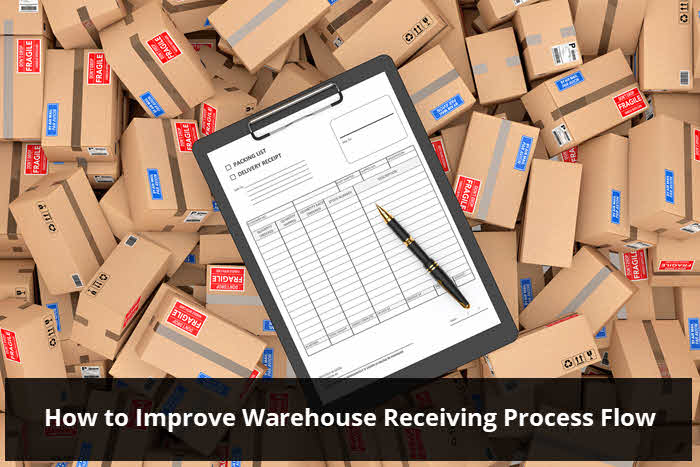
How well does your receiving process flow? Where is your warehouse at its strongest and what needs improvement?
Today we want to share four processes that include common shipping and receiving actions found in most businesses. We break down into three rating tiers:
- Marginal
- Average
- Oustanding
1) Transactions
Transactions can include bookkeeping, inventory accountability, and other data associated with your shipping and receiving operation. It includes paperwork, income, expenses, and any transaction that should be recorded.
Marginal: Accounting activities are an afterthought. Record keeping is poor. Receipts are not tracked or organized. One common cause for this lack of quality could be if a CEO of a small company wears multiple hats, one of which is an accountant.
Average: Receipts are accounted for in mass and without clear organization. Rather than processing invoices, payables, and other accounts promptly, transactions lumped together with on a weekly basis.
Outstanding: Thorough accountability and follow through on all transactions. Receipts are accounted within 24 hours, according to a standard processing time each day. i.e., daily at 3 PM. Bookkeeping and processing of financial transactions are accurate and timely. The best warehouses process orders in real time and immediately account for inventory as a ‘sold.’
2) Inspection
Proper inspection protocols are crucial to controlling quality. These practices include checking every delivery for accuracy, double-checking all orders before they go out the door, and maintaining a reliable standard for products.
Marginal: No benchmark set for how goods are inspected upon delivery. Shipments inspections are random and inconsistent. There is a lack of quality assurance (QA) which leads to incorrect supply deliveries, inconsistencies in materials and parts, and failures in the supply chain’s fill rate.
Average: A process has been developed and implemented for inspecting all deliveries upon receipt. The staff consistently adheres to quality standards for shipments and are refuses them when not met. Before products are shipped to the end user, someone on the staff is assigned to ensure order accuracy and quality standards.
Outstanding: One or more dedicated QA specialists ensure every order is successfully filled. If there is an oversight, the best companies make it right with great customer service. If there is an issue with supplies, the QA team notifies the appropriate person in their company. Vendors are notified immediately of products that fail to meet inspection. A thorough inspection process recognizes and accounts for mistakes, to eliminate repeat errors.
3) Loading Dock Management
This process category includes all labor, transportation, and logistics associated with your loading dock’s workflow. Some examples are receiving supplies from vendors, shipping orders to customers, and organizing the vehicles going in-and-out of the loading dock.
Marginal: Trucks and trailers are unorganized on your lot or loading dock. Deliveries are not coordinated. Bottlenecks in the shipping and receiving process are a regular occurrence. There may or may not be workers dedicated to loading and unloading these trucks. Vendors come and go with little or no regularity, and fulfillment processes are probably similar.
Average: Deliveries are scheduled. Someone tends to the daily receiving and fulfillment operations of your warehouse. Vendors have a specified window for when they need to fulfill their labor. (Also, the best companies account for these transactions as they happen.) Large trailer shipments are given broader windows of time to make deliveries.
Outstanding: Shipments and orders move consistently and reliably. Workstations are not cluttered with ingoing or outgoing materials. Space is utilized efficiently. The workers loading and unloading trucks follow a streamlined system. A company that develops an efficient process can schedule vendors in specific two-hour delivery windows. It is also possible to move more products through the supply chain and ship faster.
4) Labeling of Product and Inventory
The system (or lack thereof) a company has for labeling supplies, including deliveries from vendors, stocked inventory, or sold products.
Marginal: Products are not labeled. There is little or no indication to the contents of boxes, containers, or storage spaces. Inventory is not organized, lacks a clear system, and inconsistent. There is no labeling standard for employees. If suppliers label their deliveries, there is no uniform standard across all vendors.
Average: All products and inventory are labeled. If vendors do not deliver a product that is labeled, someone is assigned to label and catalog the delivery. There is a method for monitoring the product and inventory, but efficiency needs improvement.
Outstanding: The best operations receive products from vendors that comply with labeling standards. Deliveries seamlessly integrate into the warehouse supply chain. It is easy to look at incoming shipments and know exactly where the inventory needs to go. Bar-codes, RFID chips, or other tracking technologies are incorporated in the receiving process.
As you review, Identify the processes you can identify with most. Which practices are similar to yours? How do you rate? And where can you improve?
There are a number of elements to include when evaluating your warehouse receiving process flow and operate effectively. Paying close attention to people, processes and the warehouse environment itself is critical. If you can take steps to prevent a marginal operation, you will have a sound foundation on which to build continuous improvement efforts.
Atlas Series Mobile Dimensioning Stations™
In case you missed it, Newcastle Systems has a new product and recently won a
“Product of the Year Award.”
The Atlas Series Mobile Dimensioning Stations™ were designed to enable quick and accurate dimensioning directly at your product location. The rugged Atlas Series consists of 30” and 48” long workstations that hold and power the QubeVu DimStation™ and other hardware including scales, laptops/thin clients, and printers up to 12+ hours at a time or 24/7 operation.











